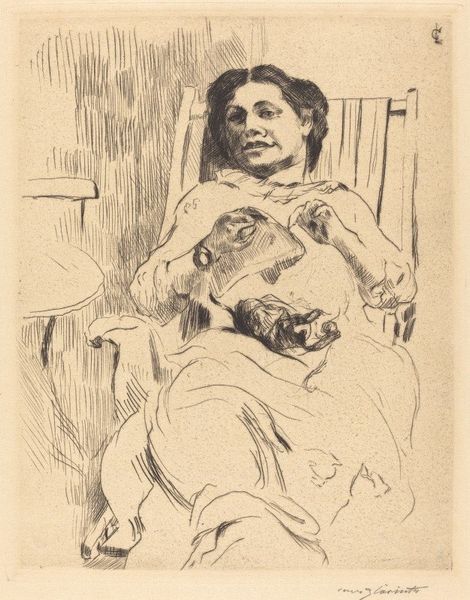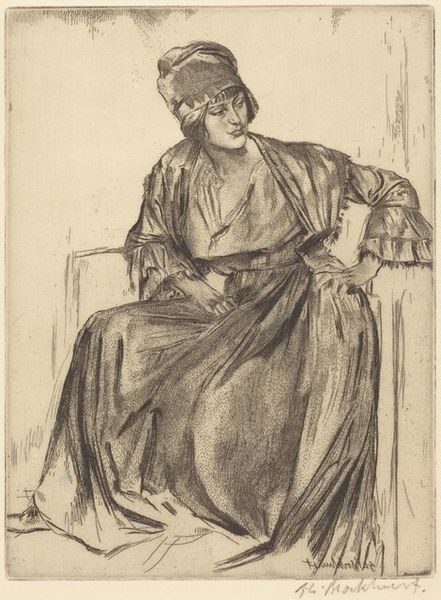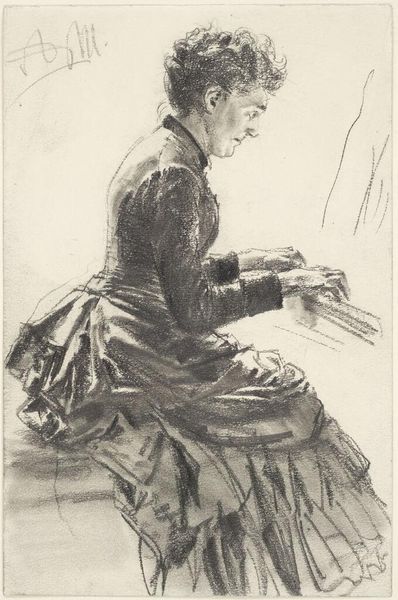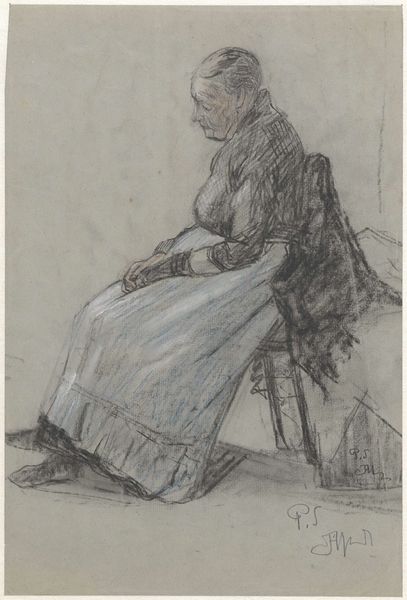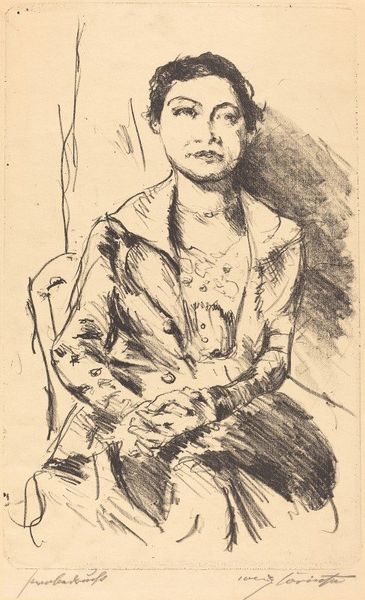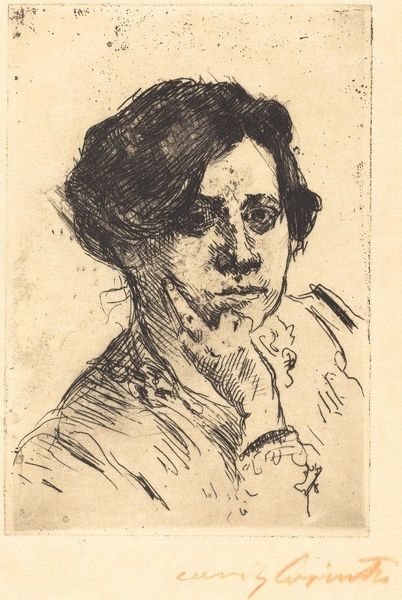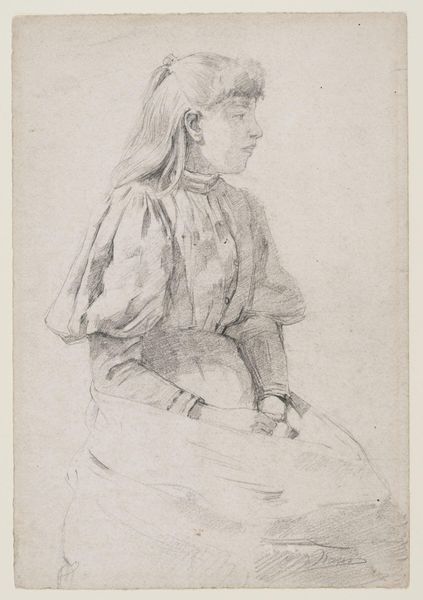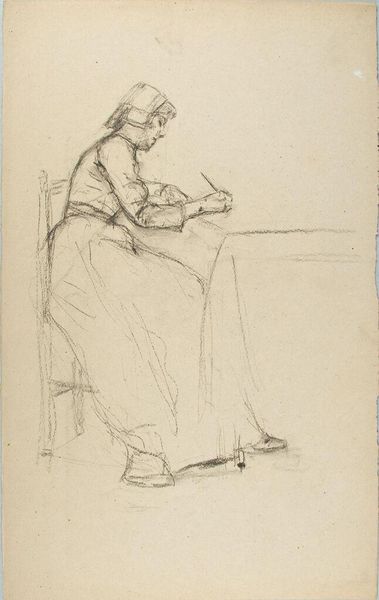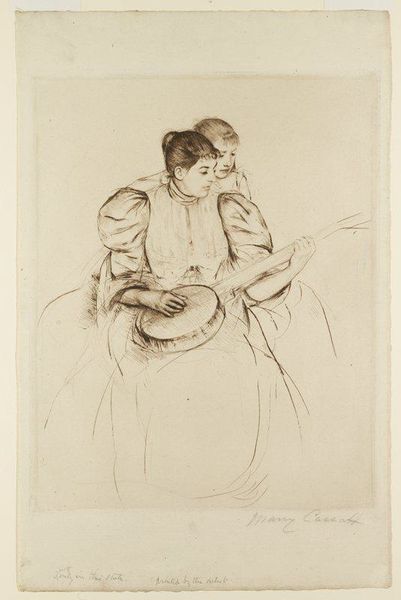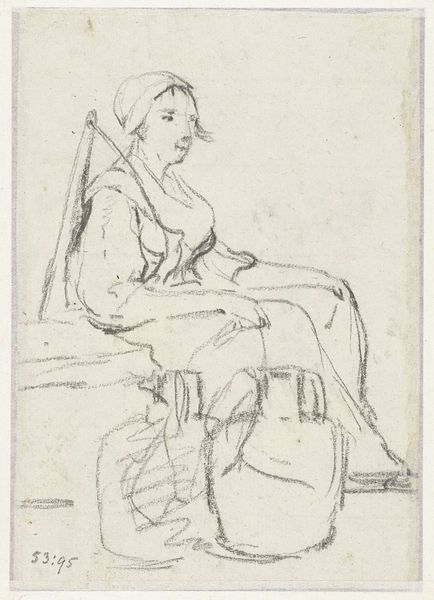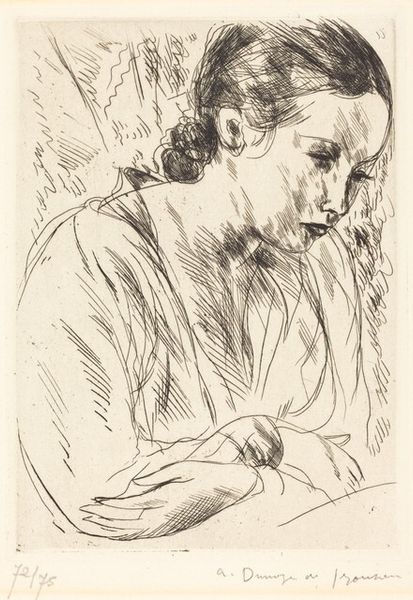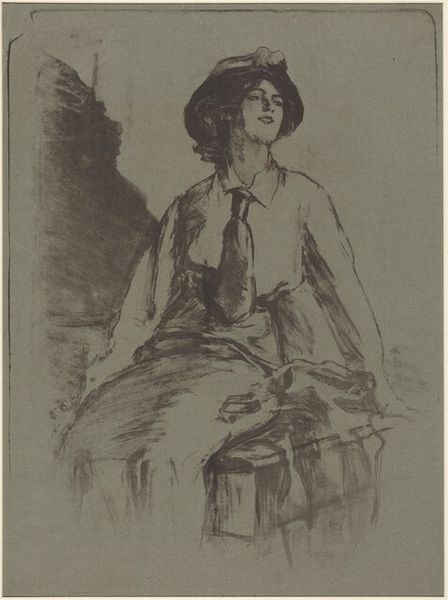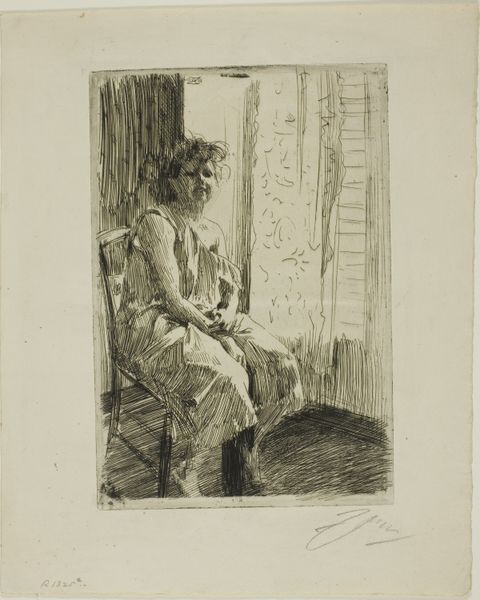
print, etching, paper
#
portrait
# print
#
etching
#
figuration
#
paper
#
pencil drawing
#
realism
Copyright: National Gallery of Art: CC0 1.0
Curator: Looking at this intriguing etching entitled "Katrina," made by William Auerbach-Levy, the first thing that strikes me is the level of detailed rendering within the textures of her clothing. The visible etched lines emphasize the patterns that cover most of her upper body and the sleeves, almost distracting us from the main subject of the print. Editor: There's a profound sense of quiet resilience in Katrina's gaze. She isn’t directly confronting us, but her expression seems contemplative, burdened perhaps. I wonder about the historical and social context shaping her experience; is she a representation of early 20th-century womanhood? What constraints are implied by the time period and how does the artist address them? Curator: I find myself considering Auerbach-Levy's artistic choices; etching is a meticulous, almost painstaking process. We should appreciate the manual labor involved in producing this portrait. The decision to create such an intimate and subdued representation with the precision of etching speaks to an intention of honoring, maybe even elevating, his subject. Editor: Absolutely. Considering the broader societal context, was Katrina a person of means, or someone from a marginalized community? I notice the stark background contrasting the highly detailed figure—how does that affect her identity? Perhaps that is simply referencing interior domestic space. What materials would have been available to women during the 20th century, and how is the artist portraying this relationship? Curator: It would be interesting to trace where he would acquire the plates to transfer the drawing, which paper would be appropriate to pull the image from it, and whether Katrina herself participated in or helped with the etching process. What did her role imply regarding production relations and her relation with the artwork, outside of being the subject of its lines? Editor: Her direct connection is critical. Auerbach-Levy's role as the artist becomes complex in the conversation of labor. The etching gives us not just an image, but also provokes questions regarding representation, power dynamics, and, obviously, women during the beginning of the 20th century. Curator: The etching invites questions about the roles and responsibilities inherent in representing someone else, specifically regarding materiality, artistic license, and, maybe, an acknowledgement of what tools are available to tell each narrative. Editor: It really urges me to seek deeper insights into Katrina’s life and how the artistic and cultural atmosphere shaped her, along with so many like her, through changing paradigms.
Comments
No comments
Be the first to comment and join the conversation on the ultimate creative platform.
